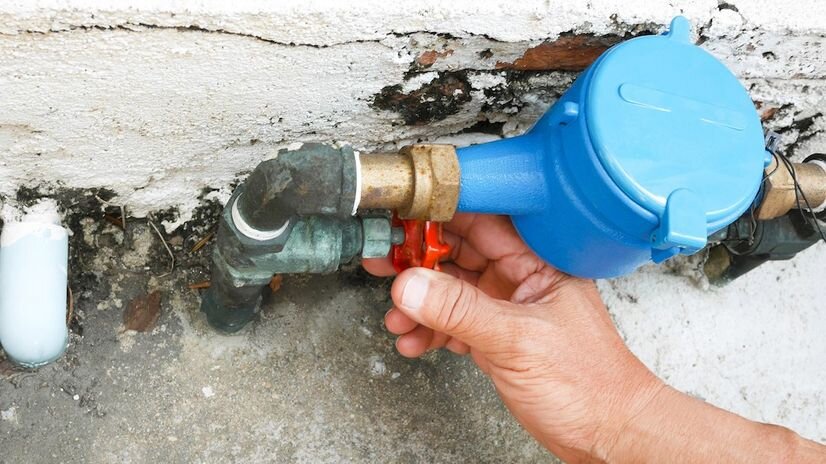
Although the Atlantic hurricane season lasts through the end of November, it typically peaks about now, as seen in the havoc wrought by the recent storms Henri and Ida. The National Oceanic and Atmospheric Administration says storm activity is likely to stay strong through October, pounding parts of the U.S.
“Homeowners should be thinking about this now, as we are in the peak of storm season,” says Mike Mushinski, president of bluefrog Plumbing + Drain in Waco, TX. “With tropical storms, hurricanes, and severe thunderstorms running rampant throughout the nation, these tips can help homeowners protect their home during the storm and save on repair and maintenance costs post-storm.”
Last year there were 30 named storms along the Atlantic Coast that caused $60 billion to $65 billion in damages to businesses and homes. In the interest of preparing for the worst and minimizing the potential damage to your home, be proactive and take the following steps.
1. Check drains for clogs
Before a storm, inspect your gutters and outdoor drains for clogs.
“Drains are meant to direct water away from the home, so it is important to keep these areas clear of debris,” says Chris Counahan, president of LeafFilter.
He says if this step is skipped, water can damage the home’s foundation or lead to flooding inside and outside the home.
“It’s possible to do the upkeep yourself, but if too much debris gets down in the drain, it’s best to call in a professional to clean it out,” says Counahan.
2. Test your sump pump
Sump pumps remove excess groundwater under a building to prevent it from entering your home. If you have a sump pump, make sure it’s ready to run.
“Pour some water into the drain with the pump. The float should move freely and activate the pump once the water reaches a certain level,” says Mushinski.
3. Monitor your septic system
If your home operates on a septic system, you probably know your tank should be pumped every few years to keep it working.
“If there are any clogs or backups, the sudden addition of rainwater can cause sewage to back up into your home. It’s a good idea to schedule plumbing service for your septic tank before a storm if you notice strange odors, slow drains, or clogged toilets,” says Mushinski.
4. Locate your main water valve
Your main valve is often one of the first things you turn off when a storm’s landfall is imminent. Turning off the main water valve will help minimize damage to your home’s interior, should a pipe burst inside.
“During storm season, it can be important to know where your valve is, especially if you need to evacuate in a hurry,” says Mushinski. “If you remain in your home during the storm, keep the main water valve off and use bottled water frugally for cooking and drinking.”
5. Know how to turn off the water heater
“During a storm, your home’s plumbing system does not need the extra pressure of tanking and heating water,” says Mushinski. “It is a good idea to turn off the power source—gas or electric—that fuels your water heater. This method also makes the water heater a great source of potable water in case your water does get shut off.”
6. Protect your windows
Storm and impact windows can protect your home from severe weather, including hurricanes.
“Impact windows not only protect the home from storms but can also save homeowners in certain areas (such as Florida) up to 40% on monthly energy bills and up to 25% on homeowners insurance,” says Matt Barresi, president of Leaf Home Enhancements.
You should also consider storm shutters for your windows.
“If you don’t have the time or budget to replace your windows, consider boarding them up to protect them—and everything in your home—as things are blown around outside,” says Bailey Carson, home care expert at Angi.
7. Check your foundation
Floodwaters can sneak in through cracks in your home’s foundation, so regularly check the exterior of your foundation, basement walls, and floors.
“These act as an open invitation to water damage, and if they’re not identified and repaired, they can lead to some serious issues,” says Carson. “If you come across any small cracks during your inspection, fill them with epoxy. If leaking persists, you find bigger cracks, or you encounter a more serious problem with your foundation, be sure to bring in a professional.”
8. Locate electricity and gas valves
If there’s a chance you will be evacuating, the Federal Emergency Management Agency recommends shutting off your electricity before you leave. Before the storm arrives, locate your gas shut-off valve and learn how to turn off your gas. Gas shutoff includes your main line and individual appliances.
“If these valves might be hard to find in the dark, use reflective tape to create arrows pointing to the values. This will make things much easier if an emergency hits,” says Carson. “Also, if you have auto shut-off valves, have a professional check them to make sure they’re working properly before the storm begins.”
9. Trim trees and latch things down
Dead tree branches and unsecured yard items can be hazards when heavy winds and rain come around.
“Consider hiring a landscaper or arborist to survey the trees and bushes on your property and remove any risky limbs. This will also make cleanup easier once the storm has passed,” says Carson.
She also recommends securing or bringing inside any outdoor belongings like grills, chairs, tables, or flowerpots.
